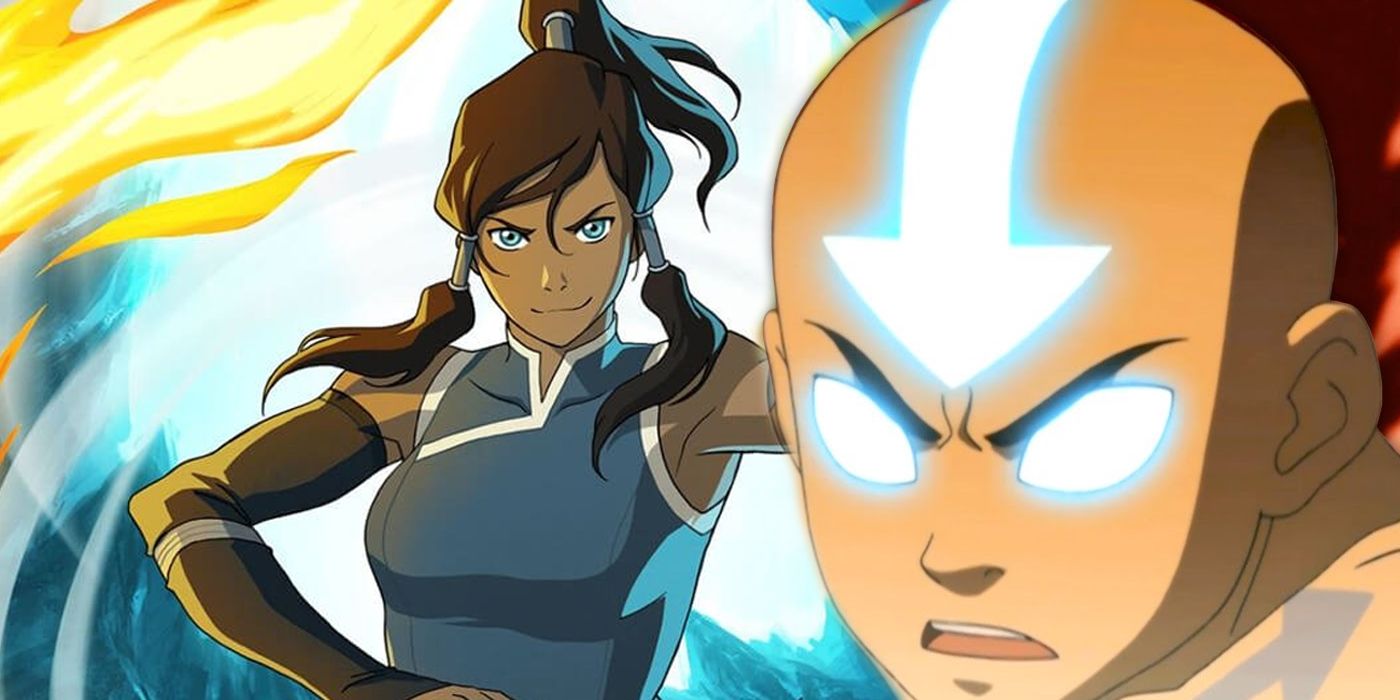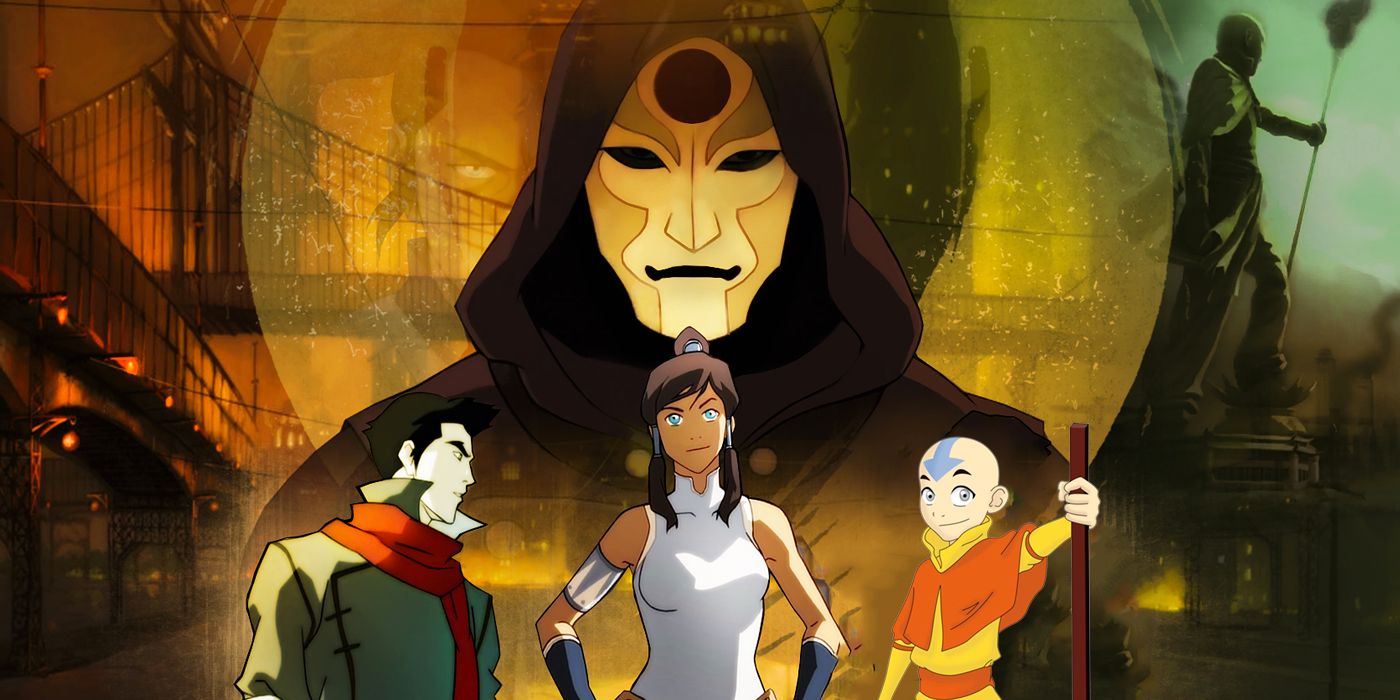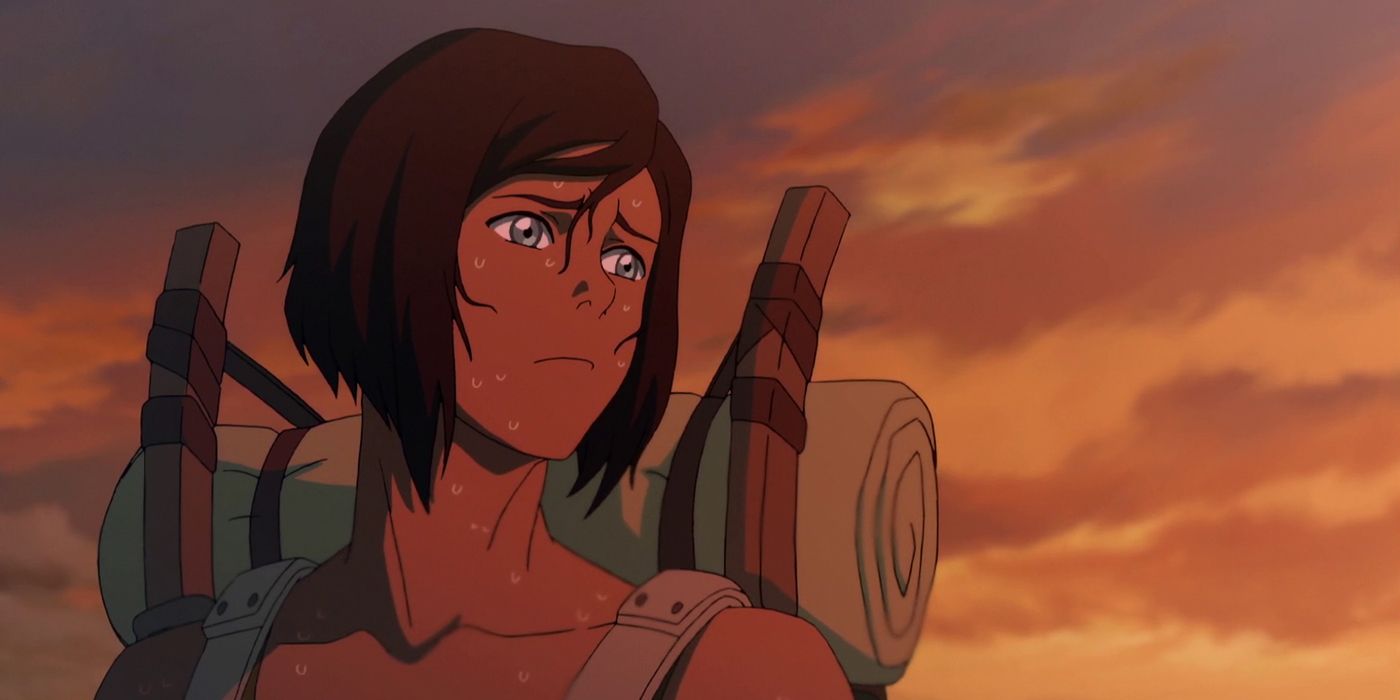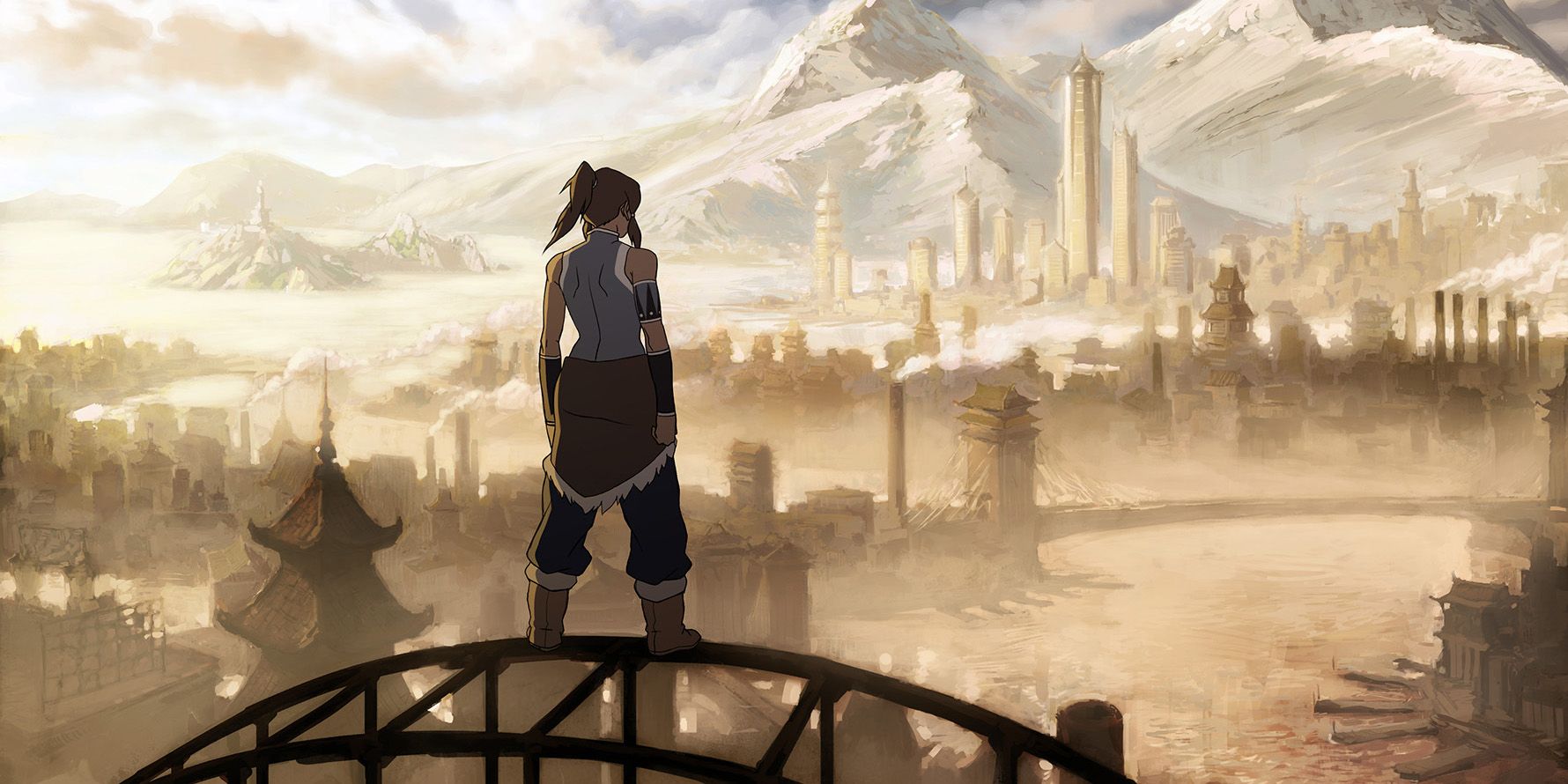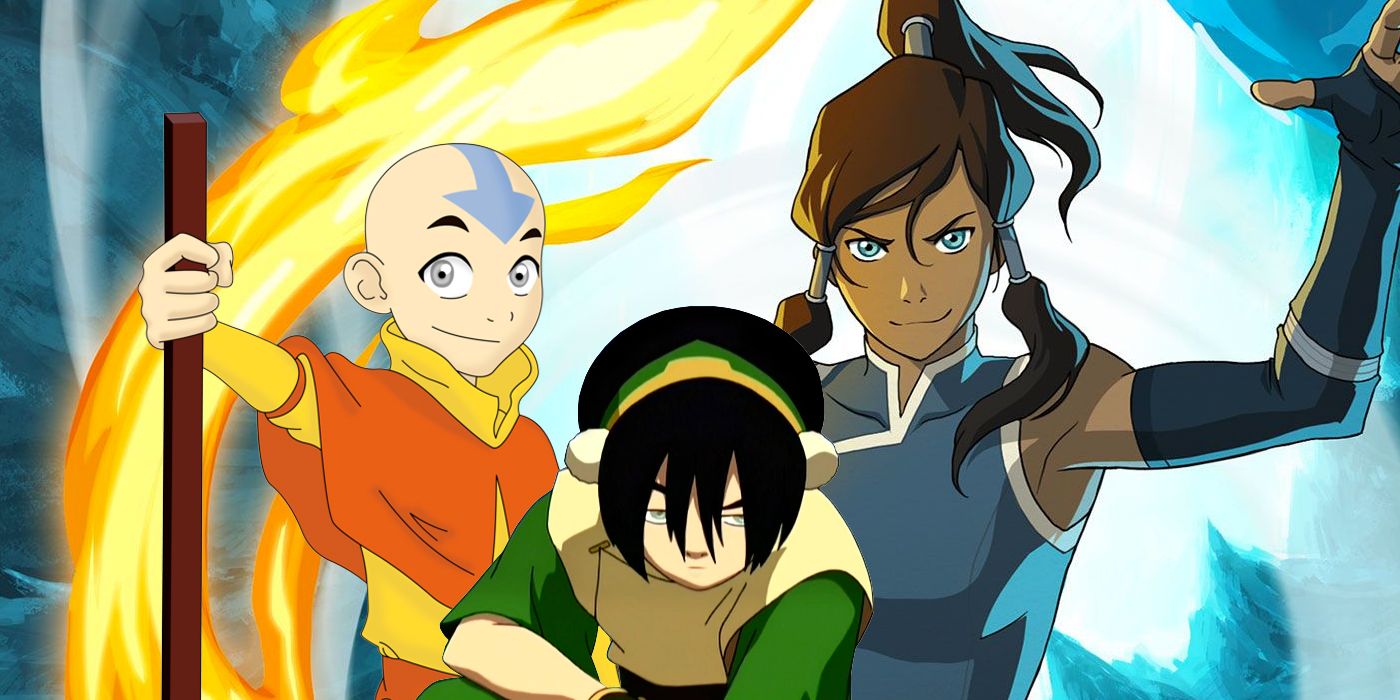Avatar: The Last Airbender is a fantastic animated series, but it is time to admit that its sequel series The Legend of Korra is overall the better show. Since it began on Nickelodeon in 2005, the Avatar franchise has become one of the best-received and beloved animated shows in recent memory.
Avatar: The Last Airbender followed 12-year-old Aang, the Avatar and only survivor of the Air nomads, and his friends Katara, a Waterbender; her brother Sokka; and later on, the Earthbender Toph as they work towards ending the Fire Nation’s war against the other nations. The series ended after three seasons, and a sequel series began in 2012, set later in the same fantasy universe, this time centering on 17-year-old Avatar Korra and her friends, the bending brothers Mako and Bolin, and non-bender Asami.
Both television shows are phenomenal and continue to receive well-earned praise, but The Legend of Korra is the superior show, even despite the fact it lacks the humor and heart of The Last Airbender. The sequel series was more subversive in its exploration of mature and difficult themes, it had greater stakes and worldbuilding, and The Legend of Korra developed a more complex, unique, and interesting protagonist. The Legend of Korra owes much to The Last Airbender, which lays the foundation for the Avatar mythology, but the sequel series pushed the envelope in ways that the original series never did.
Legend of Korra Told A Deeper, More Mature Story Than The Last Airbender
As Korra faces spiritual and political unrest in a quickly modernizing world, it’s clear that the show was always aimed at a more mature audience than The Last Airbender. Ideas of class, socioeconomic conflict, the loss of spirituality in a technology-driven world; moral issues of luck, egalitarianism, and redistribution; and discussions about mental health, privilege, fascism, and racial supremacy are all tackled head on in Korra. The Last Airbender also deals with some mature themes, but these are less complex than those explored in Korra because in the sequel series the Hundred-Year War is over and the global political stage is much more complicated than The Last Airbender’s simpler premise of defeating the imperialist Fire Nation.
Likewise, despite Zuko’s incredible character redemption arc Aang’s main antagonist throughout the series is Firelord Ozai, a fairly one-dimensional villain whose motivation was power. Korra on the other hand goes up against numerous villains, each with their own goals and moralities and the conviction that their actions are the right ones - most notably Kuvira, who proves a dark reflection of Korra. The Legend of Korra trusted its audience to understand that good and evil are not concrete or objective positions, but rather are dependent on one’s perspective.
In the same vein, the characters of The Legend of Korra are afforded more complex and powerful emotional arcs than their The Last Airbender counterparts. Aang and his friends were developed over the series, but their stories mostly followed traditional coming-of-age arcs; the shifts in the goals, values, and emotional self-awareness of The Legend of Korra’s characters are more nuanced and mature, which by extension made Korra’s characters more compelling.
Legend of Korra Had Higher Stakes
Aang spent all three seasons preparing for his showdown with the leader of the Fire Nation, to the extent that seasons 1 and 2 could almost be considered a prologue to the third. The Legend of Korra went a different route, with each season, or "book," with its own villain, which gave the show breadth to explore more sophisticated ideologies, politics, and moralities. Season 1 saw Korra go up against both those in power and those trying to overthrow them, and later Korra becomes embroiled in civil war between the Water Tribes in season 2. Season 3 had the anarchist Zaheer, whose philosophy took issue with the status quo, and season 4 presented the clearest exploration of democracy and dictatorship thus far. The Legend of Korra therefore steered away from the "us versus them" conflict of The Last Airbender and engaged with ideological differences.
The Last Airbender’s straightforward, clear-cut villain and prolonged build-up meant that the audience always knew that Aang would succeed in defeating the Firelord. This was very different from The Legend of Korra, where the stakes were always incredibly high both personally for Korra and for the world at large, and Korra lost many of her fights. Amon succeeds in taking her bending away (though she later regains her connection to the previous Avatars), and later she loses her connection to all the past Avatars. For every defeat and victory in The Legend of Korra, the ramifications were huge, and it never had the same comforting sense as The Last Airbender that everything would turn out all right.
Legend of Korra Had Better World-Building
The Last Airbender built the groundwork for the world-building in The Legend of Korra, but it was admittedly primitive. The latter creates an exciting steampunk world with more sophisticated animation and fascinating technologies, which made for a more dynamic and fun backdrop to the main action. The modernized setting also allowed for a more comprehensive look at society in this universe, exploring modes of entertainment, underground criminal activity, grassroots political movements, and new technologies, all contributing to a rich tapestry of world-building.
The Legend of Korra expands on a key aspect of the Avatar mythology, the Spirit World. Aang only visits the Spirit World a couple of times in The Last Airbender, and this dimension is never fully explained nor explored beyond knowing that the Avatar is the connection between the Spirit World and the human world. Season 2 of The Legend of Korra delves deep into the mythology of the Spirit World and its inhabitants, as well as its significance to humans and the disconnect from spirituality in a fast-moving, industrialized capitalist society.
Though The Legend of Korra’s world-building owes much to the efforts of The Last Airbender, the original series built most of its mythology around Aang’s specific experiences, whereas Avatar mythology and history was explained more comprehensively in The Legend of Korra. The audiences learned about Raava and Vaatu, the origins of the Avatar, the source of the Avatar’s power, and the relationship between humans and spirits.
Korra Was A Better Protagonist Than Aang
Aang was a great protagonist, but Korra’s journey was unique in animated television. During the fourth season in particular, when Korra contends with her PTSD and depression, her journey is treated as a difficult, dark period of self-hatred and existential doubt rather than an epic journey to self-improvement. She transforms from a brash and prideful young Avatar to an empathetic and fair leader, and this transformation requires a painful destruction of her previous self. The Legend of Korra offers an incredibly honest and visceral portrayal of mental health in its protagonist.
Korra also gets to be a more flawed and complex character than Aang, partly because of her age and the show’s tackling of mature themes and partly because The Legend of Korra had more time to develop her character. Aang’s character went down a far more formulaic coming-of-age route, whereas Korra’s development was far from linear, allowing for growth that felt hard-earned. Both are incredible protagonists with well-charted storylines, but Korra’s development felt more meaningful.
The Legend of Korra also offered a protagonist who felt very different from what came before it - a strong, courageous, bisexual woman of color as its hero. The Legend of Korra dared to push boundaries that The Last Airbender did not, but it would not have been able to do so without Avatar: The Last Airbender paving the way.

